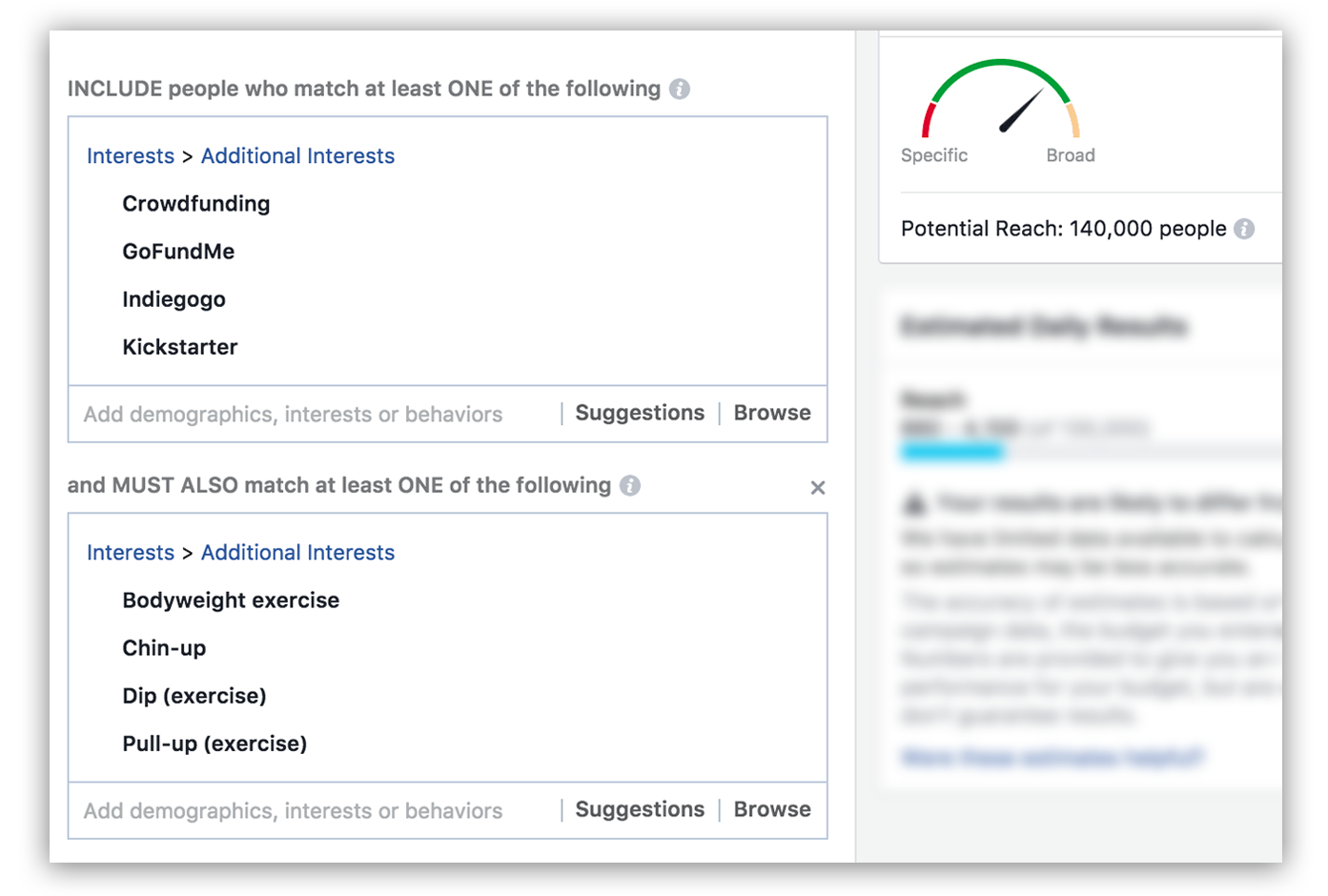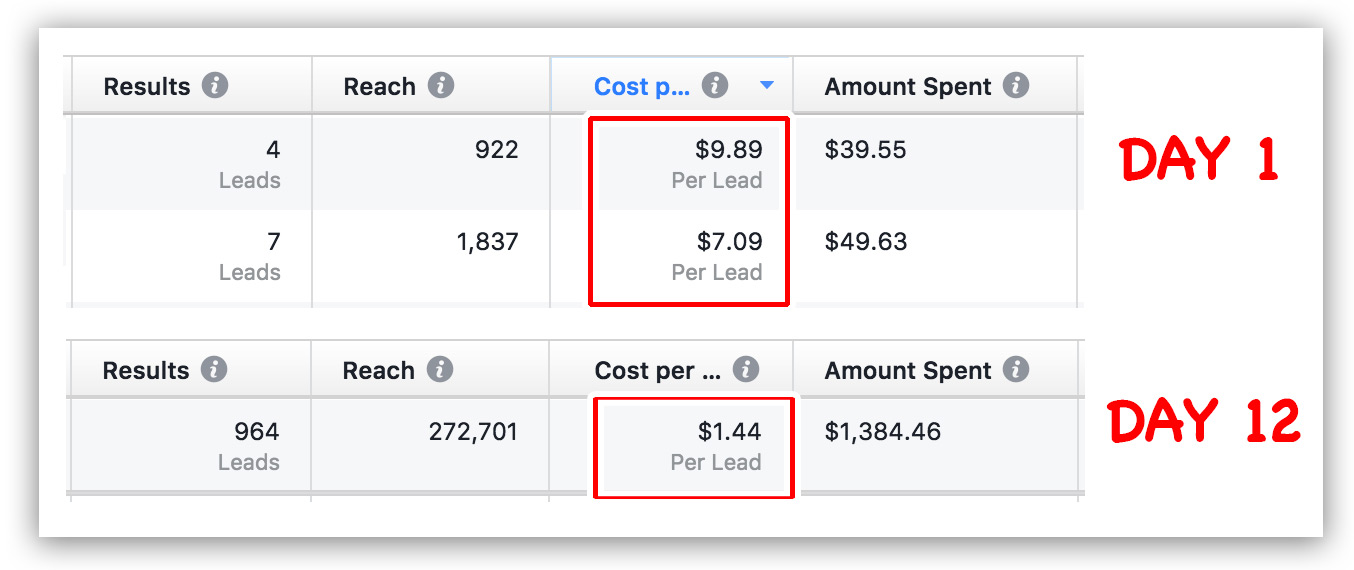Facebook Ads for Kickstarter
The post Facebook Ads for Kickstarter appeared first on Fundraise.net.

Show Your Project to Thousands of Buyers with Facebook Ads
Facebook Ads is the #1 traffic source for crowdfunding. In our campaign of $206,000, at least 60% can be directly attributed to Facebook Ads. Most other campaigns see very similar numbers. Furthermore, even non-Facebook Ads channels are still driven by Facebook Ads. For example, we generated a lot of sales from PR, like Men’s Health and Uncrate. But Men’s Health only noticed us because we generated a lot of sales using Facebook Ads. Those early sales got us the first $100,000 before Men’s Health wrote about us. Without Facebook Ads, none of our PR would have happened.
July 2020 Update: Is FB Ads (and Kickstarter) still a good idea during COVID?
In short: probably, yes.
There’s been a 30% drop in Kickstarters in 2020, as compared to 2019. But of the Kickstarters that have been launched since COVID, the funding success rate has remained steady at 45%, same as pre-COVID. In other words, fewer people are launching Kickstarters, but of those that do launch, their success rate is the same as before.
Likewise, Facebook Ad costs dropped briefly during March and April 2020 by 30%. This was during a time of massive uncertainty, when people didn’t know what the world would look like for the next 12 months. As consumer spending picked up, FB ad rates also increased. It’s the same as pre-COVID now.
In short, user behavior on both FB and on Kickstarter has largely reverted to pre-COVID. Now is as good a time as any to launch a Kickstarter.
How to Use Facebook Ads for Kickstarter
Facebook has one of the world’s most powerful ad targeting systems. Whether you want to target coffee lovers between 25 and 35, or single moms who drive SUVs, Facebook’s got you covered. Facebook can put your product in front of exactly the type of person who would fall in love with it. Here’s how to use Facebook Ads for crowdfunding:
- First, identify your market.
- Second, come up with a compelling core message.
- Third, find the right targeting on Facebook.
- Test, test, test
There are two phases:
Phase 1: Use FB Ads to Build Your Pre-Launch Email List
“The best persuaders become the best through pre-suasion – the process of arranging recipients to be receptive to a message before they encounter it.”
– Robert Cialdini, Author of Influence & presuasion Prior to our pre-launch marketing, we had no email list. Through Facebook Ads, we got close to 5,000 emails prior to our launch. This cost us about $2 per email, for a total of $9,257.  Our ads sent users to an email capture page. The email capture page asked users to put in their email, in exchange for a discount on the product when it launched.
Our ads sent users to an email capture page. The email capture page asked users to put in their email, in exchange for a discount on the product when it launched.
Phase 2: Send FB Ads Directly to Campaign Page
Once your campaign launches, you’ll want to switch your Facebook Ads campaign to send traffic directly to your campaign page. There are a few key things to know here:
- Kickstarter does not allow you to install a Facebook Pixel, but IndieGoGo does. A Facebook Pixel is required for Facebook to help you improve your ad performance.
- This means you’ll need to track most of your ad performance using Google Analytics and UTM parameters instead. This will feel extremely clunky, painful, and slow to use.
- You should start with a small budget and scale up over time. I’d recommend starting at around $100 per day, as you figure out which groups perform best.
- Instagram performed very well for us in our pre-launch marketing, but very poorly in the live campaign. Instagram ads are in the same ad platform as Facebook’s.
Facebook Pixels: Tips and Installation
Kickstarter unfortunately does not allow campaigns to install a Facebook Pixel. It’s crazy, I know, but that’s how it works. IndieGoGo does allow a Facebook Pixel. Having a Facebook pixel plays two primary roles:
- Conversion tracking. So you know which ad dollars are turning into sales.
- Lookalike audiences. So you can find more people like the ones who bought.
If you’re doing a Kickstarter, you’ll need to find workarounds to track your Facebook Ad conversions, and to do lookalike audiences. Here’s how. For Conversion Tracking For conversion tracking, you can use Google Analytics. Create a set of UTM parameters for each ad group and ad creative in your Facebook Ad campaign. Append the UTM parameters to your ads. You’ll be able to use this to track your conversions back to the ad that generated them. Alternatively, you can generate unique tracking links within Kickstarter, and use those to track conversions. For Lookalike Audiences To create a lookalike audience, you’ll need your backers’ email address first. There’s two ways to do this:
- If you’re pre-launch, run your ads to an email capture page. Use this email list to create your lookalikes.
- If you’re post-launch, send an early survey to your backers, asking a couple questions about why they bought your product, and their email. Kickstarter doesn’t give you backers’ emails until after the campaign, but by sending an early survey, you can get the email lists sooner. Then, use that for the lookalike.
Doing it Yourself vs. Hiring it Out
Most of the Kickstarter marketing agencies will not do pre-launch marketing campaigns. Instead, they wait to see which projects get early traction, and reach out to work with those campaigns. That means you’ll generally have to arrange to do your own pre-launch marketing. We ran our own Facebook Ads for our campaign. If you’ve never used Facebook Ads before, it might make sense to hire a professional. Upwork can be a good place to find freelancers. Once your campaign is live, assuming you have a strong launch (minimum $10,000 in the first couple days) you’ll start to have marketing agencies contacting you. At this point, it might make sense to have one of them take over your advertising. That said, I always advocate trying to do it yourself first, and only going the agency route if that isn’t working for you. For more information, take a look at our Marketing Agencies article. Whether you choose to hire it out or do it in house, here are a few tips for your campaign.
Setting Up Your FB Ads Campaign
Running a successful Facebook Ads campaign comes down to three things:
- Knowing your audience, and targeting the right people,
- Having an attention catching advertisement,
- Testing and figuring out what’s working
Here are a few tips for getting these three things right?
Target the Intersection of Kickstarter and Your Interests
Use the “Narrow Audience” targeting to target people who are both interested in your product type and are interested in crowdfunding. The type of person who gives money on a crowdfunding page is a very particular kind of person. They’re early adopters, and people who like to help product creators succeed. Your goal is to find the people who are both early adopters and interested in your product. The majority of our backers had already backed other projects on Kickstarter. Instead of trying to convince people who’ve never backed on Kickstarter to back for the first time, you should instead try to convince people who’ve already backed Kickstarter campaigns to back your campaign. 
Try Targeting Both Direct and Indirect Keywords
There are targeting options that are obvious, and options that might surprise you. While you definitely want to do direct targeting, it’s also important to try the less obvious options. For example, with our foldable pull up bar, we targeted keywords like “pull ups” “dips” and “bodyweight workouts”. But, we also targeted :
- Rock climbers, because rock climbers need to train their arms.
- People who lived in crowded cities (New York, SF, London) who might want to save space.
- Management consultants, because they travel frequently, workout, and have money.
Some of these – management consultants – didn’t convert for us at all. But rock climbers turned out to be our most profitable market segment. We would have never tested those markets if we had just stuck to “people who do pull ups.” Be creative and think outside the box. Who might need your product? With Facebook Ads, it’s cheap to test new potential audiences.
Test, Gather Data, and Repeat
It took a lot of testing for us to find ads that worked. In our pre-launch campaign, our cost per email started off at around $8 per lead. By the end of our campaign, we were paying about $1.50 per lead. This dramatic improvement came from us figuring out the right combination of targeting, ad copy, ad image, and ad placements. 
Watch Me Setup Profitable Facebook Ads
Want to learn how to setup high converting Facebook Ads for your crowdfunding campaign? In my Kickstarter Blueprint course, I have several video walkthroughs of Facebook Ads and how to set them up. Just click here to learn more.
The post Facebook Ads for Kickstarter appeared first on Fundraise.net.





































